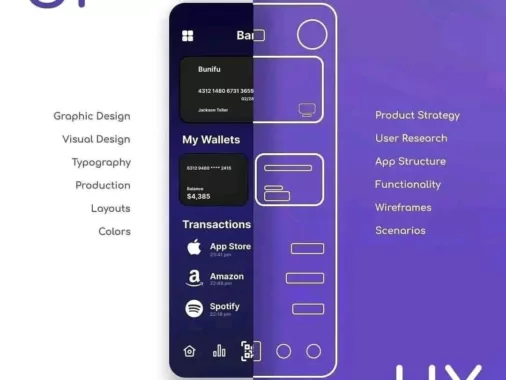As design professionals, we must consider design through various lenses to ensure we design for target audiences. If design relies on users’ mental models formed by their own perceptions and past experiences, are we inherently missing a critical lens? What if an experience is altogether new to a user? What if they’re a first-time user, a “newcomer”.
A design lens can work as a mental device for thinking about your design in a different way. It focuses attention on a single design principle, illuminating issues that may have been invisible before.
I was once a newcomer to the United States – six years ago when I came here to study. As a researcher and designer, the inadequacies in considering newcomer needs stood out to me. Millions of people like me come into new experiences and places from other countries to live, study, travel, get healthcare, and work. Imagine going through the motions of everyday life: shopping, commuting, banking, traveling, going to hospitals, libraries, and amusement parks. Imagine experiencing these as hundreds of first-time interactions, decisions, and transactions encountered at the same time. Ask yourself: are designs and systems meeting the unique needs of a newcomer?

After some years working in customer experience, I realized that people who’ve lived in the United States their whole lives could also be newcomers. It became clear that just as the designing for accessibility lens can make experiences better for all users, considering newcomer needs can improve experiences for all users.
Newcomer challenges
I’ve spoken with many visitors, immigrants, and ex-pats over time. Let me take the liberty of referring to them as “internationals” going forward. Every one of them has a story to tell about a challenge they faced as a newcomer. Many stories revolve around the challenge of accents, whether it is a newcomer struggling with different accents in the U.S., or struggling to be understood because of their own accent. Accent problems could also arise for someone with a strong regional American accent. Products and services that rely solely on voice interactions are a nightmare, but worst of all is accent bias when people are denied equitable service because of their accent. How might we, as designers, better account for language and interpretation barriers?
Newcomers can also struggle with cultural differences. For example, in the U.S. patients are expected to ask questions of their doctor, while in other cultures, doctors are revered authority figures and most patients would not dream of questioning them.
Idioms or words and phrases with dual meanings are also often a challenge. For example, in my first year in the U.S., I went to a pizza shop to pick up an order and they asked, “Did someone ring you up yet?” I was very confused! As designers, we can avoid jargon overuse and use plain language to better meet the needs of broad audiences.

The biggest challenge (and the biggest opportunity for designers) is understanding how things work and the systems around us. How to access healthcare, how insurance works, how to apply for a driver’s license, or how to get a library card; all these activities have processes that can be somewhat unintuitive. How can our designs better support the first-time learning curve that comes with so many routine processes?
Not just newcomers, but in fact any person encountering a challenge or system for the first time may have trouble understanding the process. A young couple might not understand the process for securing a mortgage or a recent graduate may not understand how apartment insurance works because they’ve never encountered that experience before. Differences may appear across age groups as well – workplaces where three generations have to work together, older people ordering groceries online due to the pandemic, or a 5-year-old adept at using an iPad who is encountering using a TV remote control for the first time.
Why It’s Important to Design for Newcomers
Designing for newcomers is good practice as it ensures you are considering the first-time experience, where introducing essential elements of your product or service helps overcome initial friction. Newcomers can represent a large user group for a business. Taking their challenges into consideration is important to business success.
First, by anticipating the needs of newcomers and meeting them, you create happy customers that return and remain loyal. Designing with newcomers in mind can help avoid errors too. Providing clear, step-by-step and chunked instructions helps provide contextual guidance and deter user errors that lead to disengagement or reduced use of a product or service altogether. Consider these support mechanisms as you design, as these errors can be costly to uncover and frustrating to fix, wasting both the user’s time and the organization’s time.
Important Tools when Designing for Newcomers
Here are some tools to use the newcomer lens when designing.
Ethnographic research
It’s essential to research newcomer experiences firsthand and not make assumptions. While recruiting, ensure you include screener criteria regarding the amount of exposure to a product or service. Recruiting international audiences can be important in any sector, but is especially critical if you work in government, healthcare, finance, real estate, hospitality, retail, travel, or education.
Mental models
Put yourself in their shoes and create a mental model map for a newcomer. What is a mental model? In the words of psychologist Kenneth Craik, “People carry in their minds a small-scale model of how the world works. These models are used to anticipate events, reason, and form explanations.” Designers can use an understanding of mental models to design messaging and the product itself to leverage existing ways of thinking or shift the mental model when needed.
Empathy map
As you consider this lens, be aware of cultural differences. An empathy map specific to a newcomer is a great way to achieve this and to communicate the importance of considering the newcomer lens to stakeholders. Empathy maps ask us to consider key aspects of our audience, including needs, thoughts, feelings, what they say, do, hear, and see as well as their pains and barriers. This is a rapid way to gather and establish areas for consideration in solutioning.
Journey map
Design processes and systems in a way that guides the user through them, step-by-step without them having to guess what’s next. Creating a journey map can help determine what steps need to be included or broken down and in what relative order. Consider including swim lanes to capture assumptions you might have made on the users’ knowledge. A great example of how journey-based thinking manifests in the final design is the Boston.gov website’s instructions (Boston, Massachusetts) on how to get married at City Hall. It breaks the marriage licensing process down into small simple steps and explains everything in concise, plain language. It provides easy-to-access links whenever there is a reference to something potentially unfamiliar since there are many forms and first-time steps to take.
Service blueprint and touchpoint orchestration
A service blueprint helps to map each touchpoint in the user’s journey in using a product or service. A touchpoint is anything a user comes into contact with – a person, artifact (digital or analog), process, or place.

For example, pamphlet handouts, outreach emails, reminder notifications and video ads are all different types of touchpoints. Touchpoint orchestration is the act of refining these touchpoints to work well individually, and seamlessly with one another. For a newcomer, it’s especially important to avoid confusing, overlapping touchpoints. Ensure alternative touchpoints to voice interactions to accommodate speech and communication barriers. If you work in CX or service design, consider a broad range of touchpoints when using this lens – user interface, ads, email, print, voice interfaces, point of sale, staff, signage, space, and process itself.
Writing for the layperson
At Mad*Pow, our content strategy team employs sixth grade reading level when writing content for general audiences. Readable.com is a great resource to help check your content, as is the Hemingway App. Use layperson language instead of technical jargon or regulatory language whenever possible. Audi’s Silvercar rental site uses simple language for rental insurance like cover “Just my car,” “other people and their things” and “you and your things” instead of terms like “liability coverage” and “collision coverage.” Simplifying the language and avoiding car jargon helps connect with customers who are not familiar with the American auto insurance industry.
Transformation and change
As more organizations embed design into their DNA, the influence of the designer is expanding. Including the newcomer lens in transformative thinking can lead to things like training staff against accent bias, being inclusive of colleagues, partners and clients that are internationals and even considering a separate experience altogether for newcomers. Any of these require significant change and a shift in thinking. This force field analysis template on Mural is a great place to start overcoming the friction of change. It helps align on the change the organization is trying to accomplish, identify driving and restraining factors and a plan to address them.
Business model canvas
The business model canvas can help you extend existing products and services to newcomers or create new ones. The canvas can help you think of the value proposition you can deliver to newcomers and how you would deliver it. These are examples of business models developed specifically for newcomers. Deserve helps internationals who are new to the country and don’t yet have a social security number (SSN). Using Deserve, they can start building a credit score even without an SSN. Stash is an investing platform for people new to investing that educates them without detracting from the task at hand, and proactively surfaces things they may not know.
When not to use this lens
People often ask me if this lens is right to use in all situations and I don’t think it is. When designing products, services or platforms for expert or power users, this lens may be a mild annoyance for them. These users have likely been through significant training or have had solid experience in similar realms. They would expect their mental models to be acknowledged. For example, professional design software follows a similar interaction pattern of their predecessors. Changing them significantly for newcomers would be confusing to the expert users.
I’ll leave you with this thought – Remember, everyone is a newcomer to something!
`









